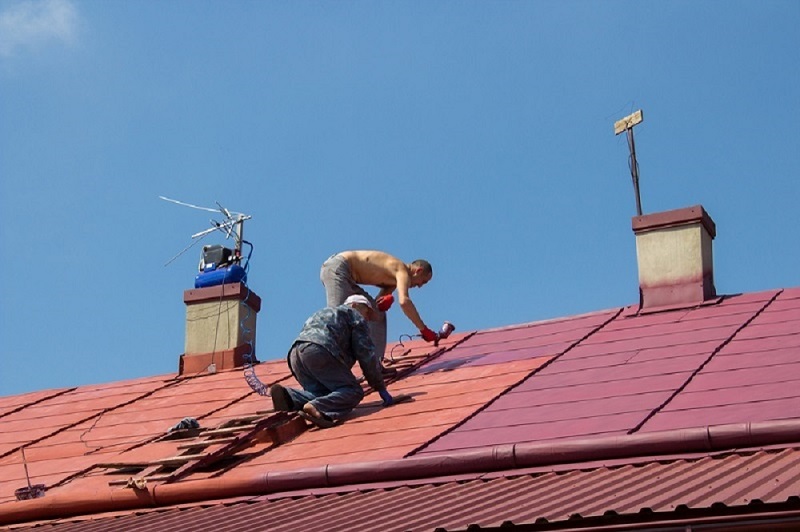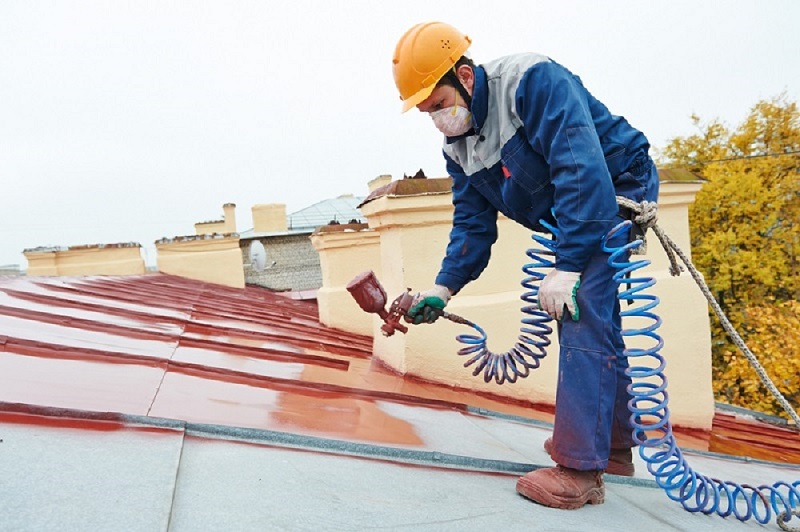Roof painting is an essential aspect of home maintenance that many homeowners overlook. Not only does it improve the overall appearance of your house, but it can also extend the life of your roof and increase its energy efficiency. This article will provide a comprehensive guide to roof painting, discussing factors that affect the cost, benefits of roof painting, the painting process, and tips for choosing the right paint type and color. By the end of this article, you will be equipped with the knowledge to make an informed decision on whether roof painting is right for your home.
1. Factors that Affect the Cost of Roof Painting
Size and Complexity of the Roof
The larger and more complex your roof is, the more it will cost to paint. Roofs witp protect your roof from the elementsh multiple levels, steep pitches, or intricate designs will require more time and labor to paint, increasing the overall cost.
Roof Material
Different roof materials require different types of paint and preparation techniques. For example, metal roofs may need a special primer, while asphalt shingles may require a specific type of paint. The type of material your roof is made of will impact the cost of painting.
Roof Condition
If your roof is in poor condition, it may require additional work before it can be painted. This may include repairing damaged shingles, replacing missing ones, or fixing leaks. The cost of these repairs will add to the overall cost of painting your roof.
Labor Costs
Labor costs can vary greatly depending on your location and the experience of the contractor you choose. It's important to get multiple quotes from different contractors to ensure you're getting a fair price for your roof painting project.
Type of Paint Used
The type of paint you choose for your roof will also impact the cost. High-quality paints with added benefits, such as UV resistance or energy efficiency, will typically be more expensive than standard roof paints.
2. Benefits of Roof Painting
Aesthetic Appeal
A fresh coat of paint can significantly improve the appearance of your home, giving it a clean and polished look. This can be particularly beneficial if you're looking to sell your home or simply want to impress your neighbors.
Increased Energy Efficiency
Certain types of roof paint can help reflect sunlight, reducing the amount of heat absorbed by your roof. This can help keep your home cooler during the summer months, reducing your reliance on air conditioning and lowering your energy bills.
Extended Roof Lifespan
Roof painting can help protect your roof from the elements, preventing damage from UV rays, moisture, and temperature fluctuations. This can help extend the life of your roof, saving you money on repairs or replacement in the long run.
Mold and Mildew Prevention
A well-maintained roof is less likely to harbor mold and mildew, which can cause damage to your home and pose health risks to your family. Roof painting can help prevent the growth of these harmful organisms.
3. The Roof Painting Process
Inspection and Preparation
Before painting your roof, a thorough inspection should be conducted to identify any areas that need repair or cleaning. This may include removing debris, fixing leaks, or replacing damaged shingles.
Cleaning
Your roof must be cleaned before painting to ensure proper adhesion of the paint. This typically involves using a pressure washer to remove dirt, algae, and other contaminants from the surface of your roof.
Priming
Depending on the type of roof material and paint being used, a primer may be necessary to ensure proper adhesion and coverage. Priming can also help seal your roof, providing additional protection against the elements.
Painting
Once your roof is clean and prepped, it's time to apply the paint. This should be done using a sprayer or roller, depending on the type of paint and roof material. Multiple coats may be necessary to achieve the desired coverage and color.
Sealing
After the paint has dried, a sealant may be applied to provide additional protection and prolong the life of your paint job.
4. Choosing the Right Roof Paint
Acrylic Paints
Acrylic paints are water-based and offer excellent adhesion, durability, and UV resistance. They are suitable for most roof types, including asphalt shingles, metal, and tile.
Elastomeric Paints
Elastomeric paints are highly flexible and can expand and contract with your roof as it experiences temperature fluctuations. This can help prevent cracking and peeling, making it an excellent option for roofs in areas with extreme temperature changes.
Reflective Paints
Reflective paints contain special pigments that help reflect sunlight, reducing the amount of heat absorbed by your roof. This can help increase your home's energy efficiency and lower your cooling costs during the summer months.
5. Selecting the Perfect Roof Paint Color
When choosing a color for your roof paint, consider the style of your home, your local climate, and any homeowner's association guidelines that may apply. Lighter colors tend to reflect more sunlight and can help keep your home cooler, while darker colors may be more appropriate for colder climates.
6. Professional Roof Painting vs. DIY
While it may be tempting to save money by painting your roof yourself, hiring a professional can ensure the job is done correctly and safely. Professionals have the necessary equipment, experience, and knowledge to properly prepare, paint, and seal your roof, providing you with a long-lasting, high-quality result.
Conclusion
Roof painting is a valuable investment that can improve the appearance and performance of your home. By understanding the factors that affect the cost, benefits, and process of roof painting, you can make an informed decision on whether this home improvement project is right for you. Whether you choose to hire a professional or tackle the job yourself, a fresh coat of paint can give your roof a new lease on life, protecting it from the elements and enhancing its energy efficiency.



0 comments :
Post a Comment